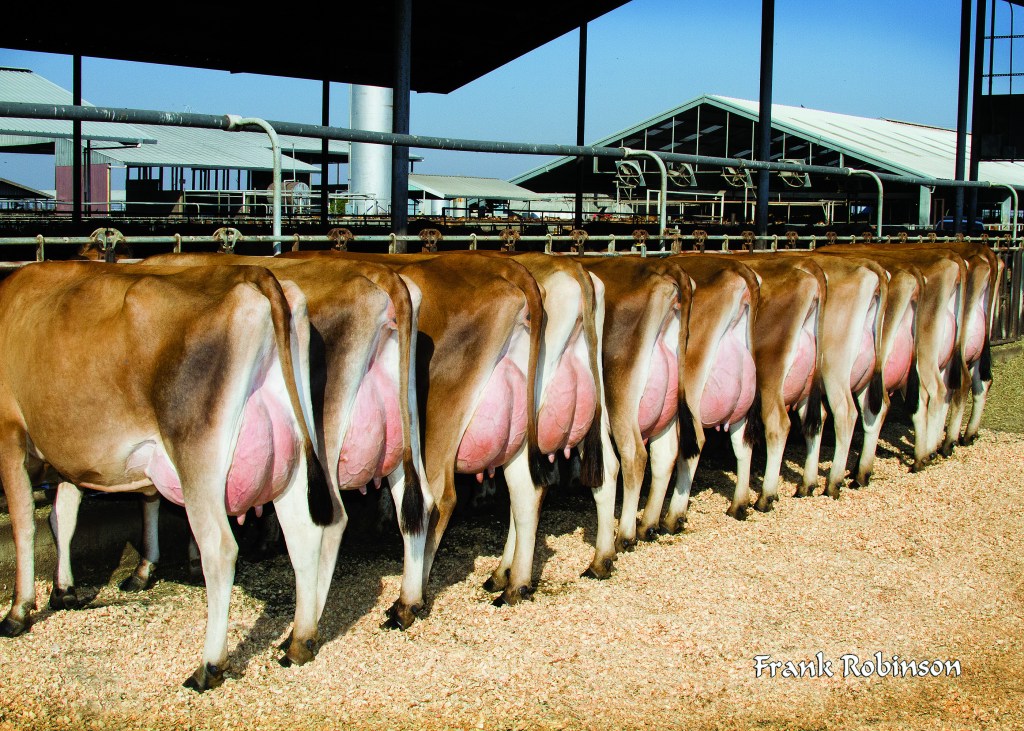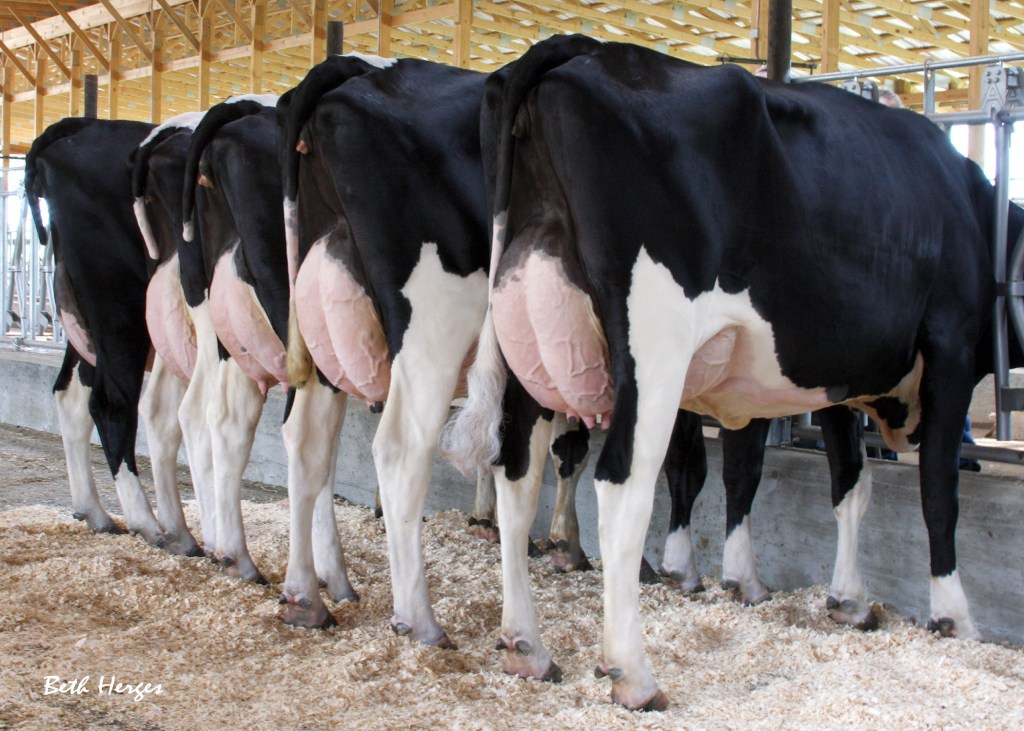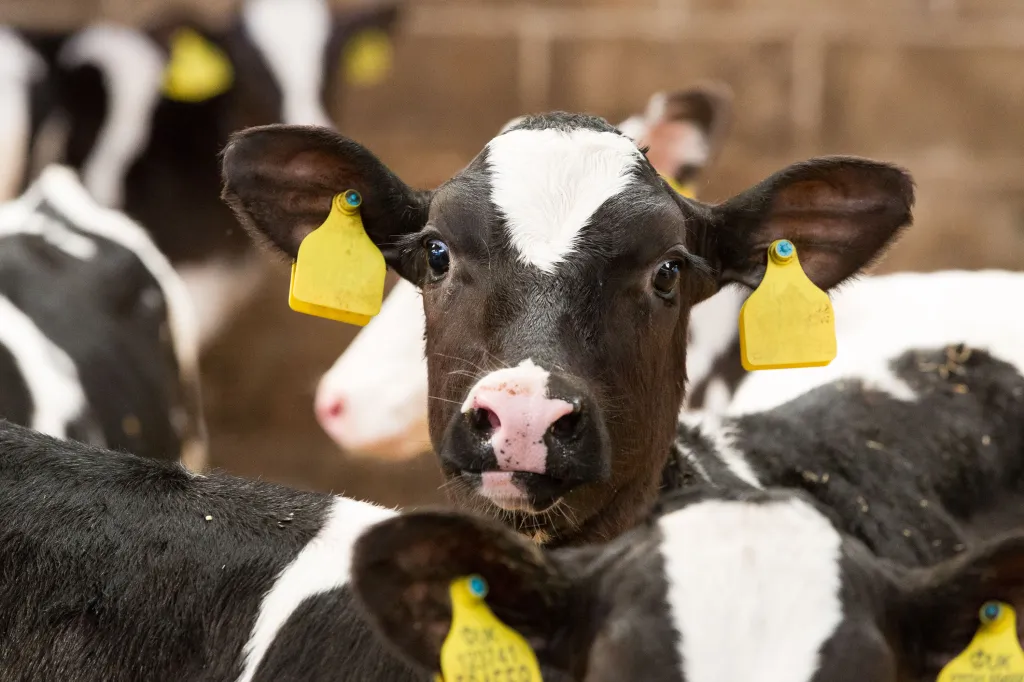As inbreeding in dairy cattle rises, so too has concern amongst producers that it will cause a long-term problem.
Within the Holstein dairy cows, the level has reached around 9%. A decade ago the level was 6%, 10 years before that it was around 5%. This means not only is inbreeding rising, but it’s also rising at an accelerated pace.
But what if inbreeding actually presents the opportunity for dairy producers to gain the generational improvement to make better cows, faster?
Inbreeding or Improvement?
The question of inbreeding is one that can’t just be written off as a problem to be stamped out. Because the rise of inbred Holstein cows has come through generational improvement in genes. As we make faster genetic progress, the percentage of inbreeding is rising. That’s because making genetic progress relies on selecting dairy cows for the right genes; keeping the traits and characteristics in the herd that make produce cows that are profitable, healthy, feed effective etc.
Genetic selection and inbreeding
There are a few aspects to inbreeding that are important to recognise:
- First, it’s necessary to understand the causal link between selection and inbreeding – it’s sometimes a necessity in order for genetic progress to be made.
- Genetic selection encourages certain, more profitable traits to become more prevalent in their herd.
- It also eliminates traits that have a negative effect on the herd’s health, efficiency, and profitability.
- Inbreeding alongside genetic selection enables producers to identify the best traits in their herd and choose pairings that elevate those characteristics while breeding out the worst traits.

Why is inbreeding a concern?
Close matings of relatives can lead to unintended consequences and create genetic defects. One of the reasons inbreeding has been spurned is because a genetic defect in both sire and dam could create a lethal recessive. That’s how complex vertebral malformation (CVM) and Bovine leukocyte adhesion deficiency (BLAD) were discovered. In the same way, we’ve identified Holstein haplotypes which are affecting fertility rates: by looking at the genome and working out which areas of the genome when combined with another result in one gene that is lethal to the resulting offspring.
Because of the rate of increasing, it would be easy to write off inbreeding as a concern that will be bad for the breed. Whilst on the surface this may be true, there’s more to consider. When comparing two animals with 500 Net Merit, if one has 0 inbreeding, and one is 10% inbred, the profitability of the inbred animal is predicted to be lower by about $25 per point of inbreeding. But that comparison isn’t an accurate one, because there are unlikely to be any animals with 500 Net Merit within the Holstein breed with 0% inbreeding. And as we get to the elite genetics on the extreme side of the bell-shaped curve, there’s even less chance.
How to outweigh the negative impact of inbreeding
In dairy cattle, inbreeding that causes genetic defects and lethal recessives are usually the result of unselected animals, where very little is known about the genetic code. But we’re not looking at an unselected population. We’ve been selecting cattle over several generations now, finding better genome profiles to replicate for over 70 years. Mating through selection is superior, and so outweighs the negative impact of inbreeding. The fact we’ve reached 9% inbreeding within dairy cattle is less of a concern when taken in line with the genetic progress increases being made, where we’re seeing improvements on a much faster scale.
The calves reaching that 9% inbreeding level are better and more profitable than those 10 years ago when the inbreeding level was 6%. They are also more sustainable, more feed efficient, healthier, and are having a more positive impact on the environment. Data shows that today’s Holsteins are around $700 more profitable over their lifetime than 10 years ago, despite the rise in inbreeding.
Inbreeding – prevention or management?
Rather than prevent and limit levels of inbreeding, our aim should be to manage inbreeding in line with our goals for genetic improvement, in order to make better cows, faster. This means looking at the net impact of genetic progress or genomic selection on inbreeding and on genetic progress overall. Limiting to a certain percentage would also limit the potential to choose the best genetic improvement strategies. We wouldn’t be pushing the genetic envelope in making happier, more profitable, more sustainable cows. Every farm will have their own definition of what a better cow is, and will select for different characteristics, depending on what good genetic progress looks like for their goals.
It’s easy to make an outcross, but it’s not easy to make an elite outcross – mating two animals to create a calf that is unrelated to the population. If they are too unrelated to the population, they also won’t have any of the best genes from the herd. That’s why it’s important to have a balance between inbreeding and genetic progress.
When we select for certain genetic traits, we are selecting based on the best genes available from both mother and father. This is bound to increase inbreeding, as we’re fixing a particular genetic profile to create the best possible animal. But by understanding more about the genome selection process we can manage out any damage caused by inbreeding and compensate with positive improvement.

How can we maximise genetic improvement while managing inbreeding?
The first step to genetic progress is selection – selecting which females are going to make the next generation of heifers, and which males or semen that is going to be used to breed those females. Mating is not part of the equation. Rather than using the mating programme to define the best bulls to use, we should instead be selecting the bulls/semen and females that are most aligned with the genetic plan:
- Start with an index that combines the traits that are important to your progress. This could be a public index or a specific one for your goals. You need to select for the percentage weight you put on each of the following:
- Production traits
- Health and longevity traits
- Efficiency traits
- Confirmation traits
- Once you’ve found the combination of traits you’re selecting for, dependent on factors such as your replacement rate, your location, how you’re paid for your milk, your expansion plans etc., you can identify the best females and the right semen for progress.
- Once the selection is complete, then consider mating, weighing up the potential inbreeding factors with the improvement that will come through the genetic selection.
Crossbreeding
Inbreeding may get to a level where the best choice to move forward is to bring in a completely new breed to create a cross. This can be an effective way of creating a more profitable, superior animal. It’s a tried and tested genetic strategy that many producers have already put into place. No matter what the level of inbreeding has reached, the first generation of that cross will have no inbreeding, and therefore will have a high level of hybrid vigour that will make those animals outperform compared to the expected parental average.
Summary FAQs
When is inbreeding a concern?
It’s always something we should be conscious of, but in selected populations, it’s not something to be concerned about in our highly selected dairy herds.
Should we set a limit for inbreeding?
Limiting inbreeding would restrict us from using some of the very best genetics or bulls in our herds. Instead, we should use the mating programme to ensure we’re not mating siblings or cousins to each other when it can be prevented, and a different sire is used on those dairy cows.
How do we prioritise genetic progress while managing inbreeding?
Setting your genetic plan and knowing the direction you’re going in. When you decide on your index, whether that’s a public index or one you’ve created yourself, you’ll have a clear picture of the traits and genetics you need to select for from your population.
As the gene pool narrows, how do we approach the arrival of new recessive genes?
With genomic selection, we find these issues far quicker than ever before. The genome is being scanned all the time, finding those lethal recessives at a faster rate, meaning we don’t need defective calves to find the issues, we can identify them before breeding takes place.






